
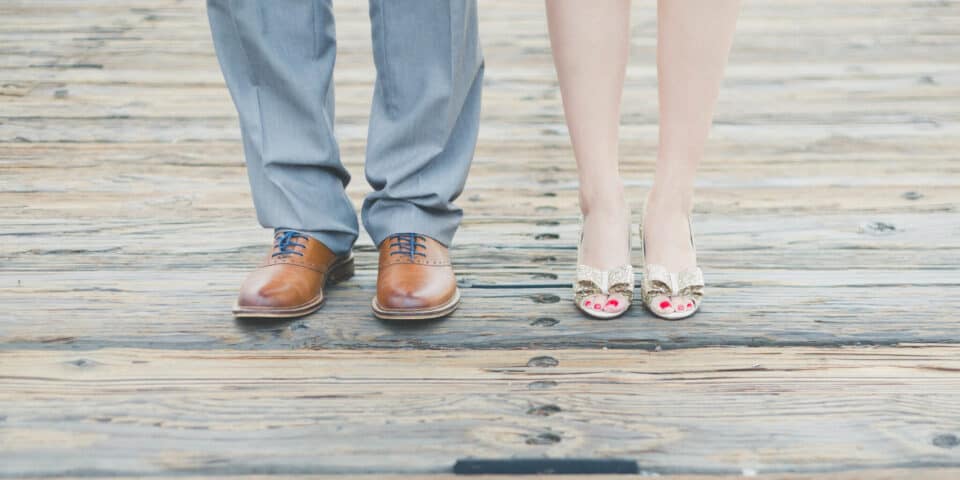
Invest in items that separate you from the ground, they say. Your bed, car/bike tires, and, of course, shoes. When it comes to selecting the right shoe, however, there can be a lot of (confusing) jargon associated with footwear, and feet in general as they pertain to shoes, from the type to the actual descriptions of a footwear’s construction and anatomy.

Gait: The way in which you run or walk. There are a number of primary descriptions including being a heel-striker, midfoot-striker or toe-striker, which specifies the first point of contact with the ground upon impact. Because people have varying gaits, there’s no one-size-fits-all shoe. Your pronation (see below for that explanation) is influenced by your gait. Pronation: The side-to-side rolling movement of your foot when impacting the ground. Naturally, the foot has an inward-rolling motion, meaning you land on the outer part of your foot, and proceed to roll inwards until your foot is flat on the ground, before subsequent take-off. Overpronation: The tendency to over-inward roll upon impact and through to take-off. You’re likely to see additional wear on the inner edge of your shoe’s cushioning. Supination: The tendency to under-inward roll – in other words, to outward-roll – upon impact and through to take-off. You’re likely to see additional wear on the outer edge of your shoe’s cushioning. Arch: Your arch is the curve of your foot that is either normal, high, or low. Often, you can determine whether you have flat feet or not through the use of a foot arch test, which involves wetting the bottom of your feet, and stepping on a piece of paper to see the outline of your foot. If you’re unsure, check out your local foot specialist shop like Feet First Clinic.
Upper: The material that wraps the foot and attaches to the midsole. This is the bulk of the shoe excluding the midsole and keeps your foot in place. Overlay: The overlay is an additional layer of material on top of the upper. Overlays are useful for extra support, varying breathability and sometimes used to add a waterproof element to a shoe, like, for example, Nike’s “shield” running shoes which offer protection against rain and snow. Eyelets: Shoelace holes. Tongue: The tongue is the material that sits on top of your foot and under the sock laces non-slip-on shoes have a tongue. Sock liner: The sock liner is the shoe’s inner material. The material is called a sock liner because it wraps around the foot like a sock. The material is often a few millimetres in thickness and can wear down and suppress over time, moulding to your foot. Toe box: The area at the end of a shoe which houses your toes. The width of the toe box is particularly important for people depending on whether they have narrow or wide feet. Remember, the width of your foot is important too, and not just the length (size). Drop/offset: Most shoes, besides Altra, have a drop greater than zero. The drop of the shoe is the difference in heel height versus toe height. If the shoe has a drop of 8 mm, for example, the heel is 8 mm higher than the height of the toe where the foot sits. Outsole: The outsole, also known as the sole, is the base of the shoe and features treads and grips that are the shoe’s last line of defense between you and the ground. Midsole: The midsole of a shoe is where the cushioning lies. Your foot sits on the midsole, separated by the in-sole (the removable sole inside your shoe), and provides the support you need. Often times, the midsole is made of Ethylene-Vinyl Acetate (EVA).
Stability: Mild pronators, or heavier-set runners, should consider stability footwear as the shoe doesn’t have as much support as a motion control shoe, but more than neutral footwear. Stability footwear often features extra support (called a medial post) on the inner side of the shoe side to prevent arch collapse. Neutral: Shoes with neutral cushioning are built uniformly with no additional features to compensate for your gait/running pattern. Cushioning is often softer than motion control and stability footwear and is designed to absorb impact rather than correct running form. Regular pronators and supinators should consider neutral footwear. Motion control: Motion control shoes are pretty self-explanatory; they’re designed to control the side-to-side range of motion of your gait. So, if you overpronate, motion control shoes have systems in place including stiffer heels and additional support on the inner medial side of the shoe to prevent additional inward roll beyond what is normal. Mild- to severe-overpronators should consider motion control shoes. Orthotics: Custom insole inserts based on your feet designed to provide corrective measures to your running gait. All these terms are good to know when deciding on a pair of shoes. For more in-person assistance, to have your gait analyzed, feet properly measured or to see if custom orthotics are right for you, check out Toronto’s Feet First Clinic on Bloor Street West. You can contact us at 416-769-3338(FEET).
At Feet First Clinic, we’re always excited to welcome new clients! After a successful 12 years of treating our amazing patients, we’re ready to continue offering only the best foot care services and products. Give us a call to ask our friendly staff any questions you may have! Our Toronto foot specialists are ready to help! Call us at 416-769-3338 or Book Your Assessment Today!

With 15 years of dedicated experience in podiatry, Bianca Carter offers a wealth of knowledge and expertise at Feet First Clinic. Throughout her career, Bianca has worked closely with leading chiropodists, continually deepening her understanding of all aspects of foot care.

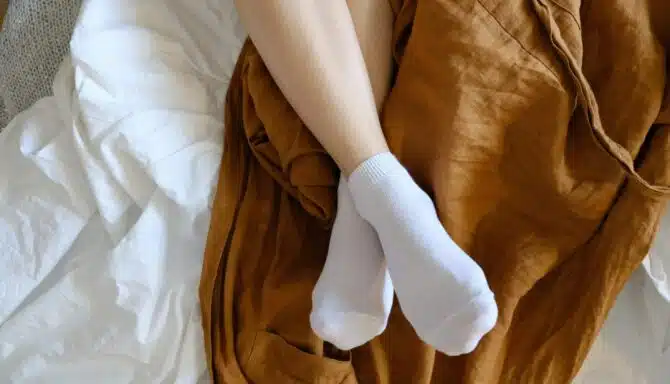
Looking to end your stint with foot arch pain? You've come to the right place. This post explores different kinds of arch pain, what causes it, and our top tips for foot arch pain relief. Plantar fasciitis Plantar fasciitis occurs when the plantar fascia (the thick band of tissue running along the bottom of your foot) becomes inflamed. It typically causes sharp pain in the heel and arch, especially in the morning or after periods of rest. Cause: Repeated stress on the feet, especially from high-impact activities, can strain the arch and lead to pain. Increased body weight can also stress the feet more, leading to arch pain and discomfort. Finally, shoes lacking adequate arch support or cushioning and poorly fitted shoes can exacerbate foot pain. How to alleviate pain: Rest, recovery and ice are the first things you should do to alleviate plantar fasciitis. The next step is to invest in footwear with proper arch support and cushioning. You can also upgrade your existing footwear with insoles or orthotic inserts designed for arch support. Custom orthotics help redistribute pressure in your foot and reduce strain on the arch. Stretching exercises for the Achilles tendon and plantar fascia can also reduce inflammation and arch pain associated with plantar fasciitis.. High arches People with high arches often experience discomfort in the arch and heel due to insufficient shock absorption. This condition can lead to an imbalance in foot mechanics, causing pain in various parts of the foot. Cause: Genetic factors can play a role in high arches. How to alleviate pain: Cushioned, supportive shoes and insoles can help manage arch pain associated with high arches. Look for footwear with ample cushioning and arch support to alleviate discomfort. Flat feet Also known as fallen arches, flat feet affects the arch's ability to properly support a person's body weight, which then leads to arch pain. Flat feet can cause many biomechanical issues, which can lead to overpronation (where the foot rolls inward excessively), plantar fasciitis, and many other foot conditions, all of which contribute to foot and ankle pain. Cause: Like high arches, genetic factors can play a role in flat feet. Flat feet can predispose individuals to certain types of foot pain. How to alleviate pain: Proper arch support is key for foot arch pain relief. People with flat feet should look for stability shoes. These shoes are specially designed to correct overpronation and properly support the arch. Custom orthotics can also significantly support fallen arches. They're tailored to your foot's needs and help improve alignment and pain. You can get custom orthotics at our foot clinic by booking an Orthotic Assessment appointment with one of our licensed chiropodists.
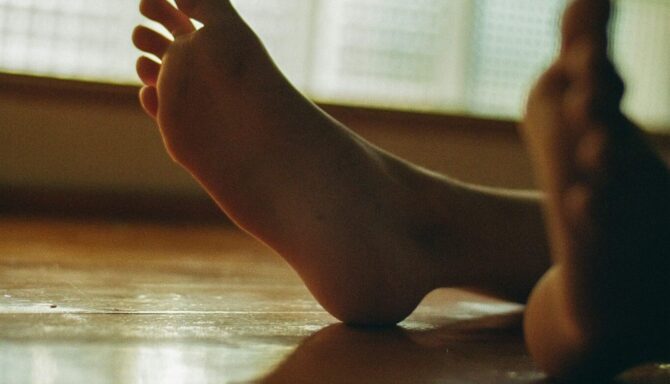
Plantar fasciitis, a condition that impacts the foot and the heel, is very common but often misunderstood. If you've felt sharp stabbing pain in your heel when you take your first steps in the morning, you might know this condition firsthand. But what does plantar fasciitis mean, and how can you treat it? Let's explore the specifics to help you better understand plantar fasciitis causes and treatments. What is plantar fasciitis? Plantar fasciitis happens when the plantar fascia gets inflamed. This thick band of tissue stretches from your heel to your toes along the bottom of your foot. It helps support your foot's arch and handles the stress we put on our feet. When this band gets irritated or swollen, it can lead to pain and discomfort. You'll often feel this pain in your heel area. Causes of plantar fasciitis Plantar fasciitis is typically caused by overuse and activities that put too much stress on the feet, which ultimately strains the plantar fascia. Such activities include includes running long distances, standing for hours, or playing high-impact sports. Risk factors that can make you especially vulnerable to developing plantar fasciitis include: Foot structure: Conditions such as flat feet or high arches can lead to unhealthy biomechanics (i.e.: overpronation), which can then can put extra stress on the plantar fascia when you walk. Improper footwear: Wearing shoes that don't support or cushion your feet well can make you more likely to develop plantar fasciitis. High heels, old shoes, or flimsy footwear without adequate arch support can all contribute. Getting older: Those aged 40-60 are more prone to plantar fasciitis, but it can happen to anyone at any age. It's one of many age-related changes to the feet we experience as we age. Your job: Working a job where you have to stand or walk on hard floors for a long time can increase your chances of getting this condition. That's right! Even your career can influence your foot health. Symptoms of plantar fasciitis The telltale symptom of plantar fasciitis is heel pain. In addition, you may experience the following: Quick-hitting pain: Pain is often most severe when you take your first steps in the morning, or after sitting for an extended period. This pain tends to decrease with continued activity but can return after rest. Sharp pain: Plantar fasciitis-related pain is typically sharp and may be felt near the heel's underside. Pain post-exercise: While activity may initially relieve the pain, it can worsen after exercise or at the end of the day. Tenderness: Pressing on the area where the plantar fascia attaches to the heel bone may cause pain. Treating plantar fasciitis You may experience pain with plantar fasciitis first thing in the morning. The good news is that most cases of plantar fasciitis can be managed with conservative treatments. Here are some effective strategies for treating plantar fasciitis: Rest and ice: Resting and applying ice to the affected area can help reduce inflammation and pain. Aim to ice your heel for 15-20 minutes several times daily. You may also benefit from over-the-counter anti-inflammatories like ibuprofen or naproxen, which can reduce pain and inflammation. Stretching exercises: Gentle stretching of the calf muscles, Achilles tendon, and plantar fascia can help alleviate tension and reduce pain. Exercises such as the calf stretch, towel stretch, and rolling the foot over a cold bottle or a tennis ball can be beneficial. Footwear: Wear supportive shoes with good arch support and cushioning. Avoid walking barefoot on hard surfaces, and consider using custom orthotic inserts to provide additional support. Read our dedicated blog post on the best shoes for plantar fasciitis. Night splints: Wearing night splints can help keep the plantar fascia stretched overnight, which may reduce morning pain. Avoid high-impact sports and activities: Temporarily reducing or modifying activities that exacerbate your symptoms can help prevent further irritation of the plantar fascia.

As children’s foot development takes its first steps, it’s common to encounter a few bumps along the way. From in-toeing to Sever’s disease, these growing pains are part of the journey as little ones explore the world with developing feet. Let’s take a look at what foot conditions might correspond with your child’s age. Ages 1-3: In-Toeing and Toe-Walking Troublesome toes occurring during the “terrible twos” can be concerning. But these quirky walking patterns are totally normal developmental milestones for children's foot development. No cause for alarm or invasive treatment! In-toeing, also known as pigeon-toeing, is when a child's feet turn inward instead of pointing straight ahead while walking. Toe walking is when a child walks on the balls of their feet with their heels off the ground. Up to Ages 3-4: Flat Feet Children around this age will have pen planus, also known as fallen arches or flat feet. This is when the entire sole of their foot contacts the ground while standing and walking. Traditional children's foot development is at play here, as arches in children's feet develop around age 6. No treatment is generally needed for flat feet before this point, unless your child’s flat feet persist as they age, in which case you may want to consider custom orthotics, stability shoes and other treatments for flat feet. 5+ Years Old: Blisters As kids get older, gain a sense of independence and participate in more physical extracurricular activities and outdoor play, they may start to develop skin conditions on their feet. Enter: blisters. These are a pretty common condition that’s usually harmless, but can painful and bothersome for kids when they walk. Blisters form as a result of excessive friction between shoes and the foot’s skin. Read here to learn the best ways of preventing foot problems like blisters and how to choose the right shoes for children! Puberty and Growth Spurts: Sever’s Disease Did you know that the concept "growing pains" in children is not what most people think it is? While kids may experience pain as they grow, the pain itself is not caused by growing. But what can cause pain for kids going through puberty is something called Sever’s Disease, which is like a kid’s-only version of injuries like plantar fasciitis, Achille’s tendonitis and heel spurs. Sever's disease kicks in when a growing heel gets overworked, causing inflammation. It leads to sharp heel pain, especially when kids are on the move, like during sports and playtime! Kids between 9 and 14 are the most vulnerable. Solid foot care for kids can help offset Sever’s disease. Try the RICE method: rest, ice, compression and elevation. You should also buy your child supportive footwear to ease the strain on the heel. Avoiding high-impact activities can also help speed up recovery.

When it comes to foot problem prevention, being proactive is key to maintaining healthy feet and avoiding a future of discomfort. Understanding common foot issues and taking steps to prevent them can help reduce the risk of complications down the road. In this article, we’ll explore five of the most common foot conditions and provide essential foot care tips to help you keep your feet in top shape. Plantar Fasciitis One in ten people will experience plantar fasciitis in their lifetime, making it one of the most common foot issues. Plantar fasciitis at the start, can cause minor discomfort in the arch of the foot or even in the heel. It usually starts when you just get out of bed. It calms down through the day and then the soreness starts at the end of the day. That discomfort, if not properly treated and investigated, can increase and then start to cause stronger and sharper pain. Sometimes this pain can last through the day to a point where you might find it difficult to walk. The main cause is inflammation- constant pulling and tugging on the thick, inelastic fascia itself (midfoot pain). Or, where it inserts from (the heel pain). Pressure can be from the arch pressing down on the fascia: It can also be a tight muscle, like the calf muscle pulling up behind the heel and forcing the fascia to pull away from the heel It can also be a combination of a tight muscle and pulling of the fascia. In rare occasions plantar fasciitis is caused by a nerve entrapment. Prevention Preventing plantar fasciitis is mainly down to figuring out what was the cause in the first place. It might be a biomechanical issue with the feet. It could be due to the shoes that you might be wearing- at home, at work or just around town. In some cases it is due to a muscle imbalance. So figuring out the cause is the first step in treating and then preventing further plantar fascia pain in the future. One of the cornerstone treatments in preventing plantar fasciitis involves prioritizing arch support! It is a good idea to wear supportive shoes with good arch support and shock absorption, especially if you spend long periods standing or walking. Custom or over-the-counter orthotic inserts can also provide extra arch support and cushioning to distribute pressure more evenly across your feet. If you have a muscle imbalance then regular, targeted stretching of your calves and feet is also a healthy foot practice that can prevent foot ailments like plantar fasciitis. Stretching the calves is especially helpful as it reduces strain on the plantar fascia. Check out the best exercises for plantar fasciitis. You can do your exercise routine before bed and when you wake up to prevent this painful condition from affecting your mornings. Some patients have found rolling a tennis ball/ golf ball under their foot can be helpful to break up the inflammation to the area. Or rolling a wrapped frozen water bottle (no longer than 4 mins, then remove, wait to warm then walk) reduces inflammation build up Athlete’s Foot Athlete's foot can affect up to 15% of the global population! It's a fungal infection that usually occurs on the skin between the toes. However it can also start and spread to the arches and then to the boarder of the foot. It can be itchy, red scaly looking and sometimes crack. Inbetween the toes the skin can look more damp than normal. Prevention Athletes foot is prevented if you reduce the causes. It enjoys dark, moist environments with an ample food supply. So your feet can be a perfect place for this to thrive. It can be contagious but also you can be more prone to catching it. So, -if your feet are kept in a constant moist environment. - you go to public pools and walk around barefooted. - if you put your socks on right after having a bath or shower. All these issues increase the risk of catching Athletes foot and allowing it to spread. Prevention is linked to good foot hygiene. Therefore, make sure you wear slippers or flip-flops in public areas such as locker rooms or pools, and avoid walking barefoot in these places. You should also make sure your feet stay clean and dry, as fungus thrives in moist environments. Opt for moisture-wicking socks, foot deodorants and breathable shoes. And never put on your shoes while your feet are damp! If you are daily in the same shoes then try to use 2 pairs of shoes. Use one one day and one pair another day to allow the shoes to dry out. Change the insoles regularly. Morton’s Neuroma Some experts believe that one in three people will experience a Morton’s neuroma at some point. It is characterized by a thickening of the tissue around the nerves inbetween the balls of toes (typically between the 3rd and 4th balls of the toes), and causes pain and discomfort in the ball of your foot. You can get neuromas in other parts of the foot, but between the 3rd and 4th ball of the toes is called a Mortons neuroma Prevention Prevention is the best treatment for a Mortons Neuroma. Preventing the rubbing and thickening of the nerves is a priority. Unfortunately as the nerve thickens there is a chance that it will not go back to normal. Preventing a neuroma is simply by wearing wider footwear in the toebox. You can tell if it is your shoes just by removing the shoes and your soreness should subside. Remember that work shoes, normal outdoor shoes and even slippers can all have an affect on compressing the toes together. Having a heeled shoe puts more pressure upon the balls of your foot- so reducing arch height is also helpful (and if you must wear high heels, make sure they're the healthy kind!). Custom orthotics can provide a way to splay the balls of the foot so even if the neuroma has thickened, it can reduce the pressure the balls of the foot are placing upon the nerves. Ingrown Toenails Our toenails can be a bit troublesome sometimes —they crack, curl, get too thick, and sometimes even surprise us with strange colours! But one of the most common toenail conditions is ingrown toenails. Two out of every ten people visiting a healthcare provider for a foot issue end up complaining about this painful nuisance. Ingrown toenails can occur when a spike of nail is pressing into the skin. It can also happen if you have pincer like nails (involuted) and those nails press into the skin. If you have wider nails, the skin on the side of your toe can be more prone to go into the nail. If the toes are kept in a damp environment then the skin and nails will be soft and more easily press into one another Prevention Prevention comes with finding the cause and preferable no home treatment (in many cases it can make it worse). Apart from scratching your socks, placing a "V" into the nail doesn't do anything. Poor nail care is usually the main culprit especially cutting down the sides of the nail. It is better to allow the nail to grow past the skin line and then cut to the contour of the nail. Cutting straight across can leave angles and cutting down the sides can leave spikes of nail. If your nails are curled around or thickened then professional footcare can help thin down the nail and offer treatments for the curved nail. Reducing dampness can reduce ingrown toenails. Wider footwear (and non tight socks) can reduce the risk of compressing the skin into the nail. In some cases it can be hard to cut your nails effectively, if this is the case then having a medical pedicure from a professional is usually a good preventative option. Calluses Almost everyone will get at least a small foot callus in their lifetime and is a common foot issue. They are thickened areas of skin that develop due to repeated friction or pressure. Initially they can be pain free but as time continues then the callus can build up and adds pressure that that area. This adds more callus and now a cycle starts. Eventually too much pressure and the skin starts to break down and dry blood can appear within the skin. Prevention Callus is best treated by prevention- finding out why the hard skin is there in the first place. So a footcare professional will look at your feet and assess where the hard skin is and then find the cause- where is that pressure coming from. They will then reduce down the hard skin, to break that pressure cycle, then offer advice on how to prevent the hard skin coming back- or reducing its build up. In many cases this is due to poor fitting footwear or a mechanical issue with the foot. Preventing callus build up can be done once a week with a plastic footfile when the foot is dry. Pumice stones are used when the foot is wet. But it is usually a good idea to check the cause by a footcare professional as sometimes too much file or pumice use can make the area sore, affect the good skin surrounding the callus or even make the area worse as you might go too deep. Dry skin is prevented where you moisturize your feet regularly (but not inbetween your toes). It will also help the callus not crack but it won't prevent the callus build up- as that is caused through pressure.
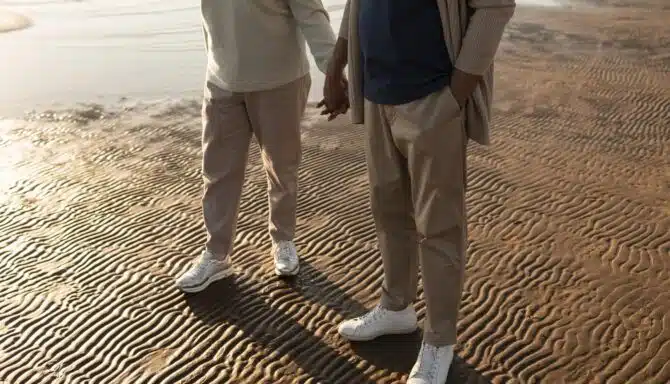
Foot care for seniors is a vital aspect of maintaining overall health and mobility. As we age, our feet undergo changes that can lead to various problems, making it essential to prioritize foot health. This article will explore common foot problems in older adults and offer practical foot care tips for the elderly to help maintain mobility and prevent discomfort as much as possible. Understanding Aging Adults' Foot Health Aging adults' foot health often deteriorates due to factors such as reduced blood circulation, thinning skin, and the natural wear and tear on joints and muscles. These changes can lead to an increased risk of developing foot issues, which can severely impact mobility and quality of life. Common Foot Problems in Older Adults Several common foot problems in older adults can arise as a result of aging: Plantar Fasciitis Decades wearing the wrong shoes for your feet = feeling the damage and heel pain when you get older. Seniors are also vulnerable to plantar fasciitis if they have balance and mobility challenges, as these affect the natural gait pattern. In other words, as older adults struggle with movement, they might walk differently, which can put extra stress on their feet and lead to heel pain. Lastly, poor blood circulation means less ability to recover from “micro injuries,” which is essentially what plantar fasciitis is. Bunions Bothersome bunions affect seniors more than younger adults. The toes spread out more due to natural aging-related foot changes, placing pressure on the wrong areas. Bunions can also tend to form and worsen gradually over time, meaning seniors will feel their full effects. Dry Skin Skin aging doesn't just affect our face; it affects our feet too! As we age, the processes that help our feet stay moisturized, namely the production of natural oils and cell renewal, slow down. This leads to dry, flaky skin on the feet. Dry skin is on the feet is not just a cosmetic concern; it makes the feet more prone to developing many problems like itching, cracked heels, corns and calluses. Corns and Calluses Not only does our skin get dryer as we age, it also gets thinner. This makes the feet more prone to developing corns and calluses. Corns and calluses are caused by friction, and are two of the most common skin problems affecting seniors. When the skin thins, the skin forms calluses and corns more quickly in order to protect itself. This issue is compounded for older adults who have been wearing ill-fitting shoes for years Arthritis Osteoarthritis (also referred to as degenerative joint disease) is a form of arthritis typically associated with aging. It is caused by cumulative wear-and-tear on the joints. Over time, the protective lining around the joints wears down, resulting in excessive rubbing and grinding between joints. Foot Care Tips for the Elderly Foot care for seniors entails a proactive approach. Here are our top tips for maintaining foot health as you age: Regular Foot Inspections and Hygiene Our number-one foot care tip for older adults is to get regular medical pedicures with a chiropodist. This is especially helpful for seniors who have difficulty bending or trimming their own toenails. A licensed Toronto chiropodist can properly trim and file your toenails, remove corns and calluses, and address any other common foot problems in older adults. A foot specialist will also inspect and keep an your feet for any signs of redness, swelling, cuts, or sores that could indicate a worsening skin issue. Our Toronto chiropodists will also provide expert foot care advice for your at-home maintenance. At-Home Foot Care: Moisturizing, Hygiene and Inspections Foot care for seniors should involve moisturizing daily with a foot cream in order to keep the skin on the feet strong and firm. This will also help reduce callus and corn buildup. At-home foot care for seniors also involves practicing good hygiene, including washing feet daily and keeping your toenails trimmed. This is essential to prevent infections and other complications. Proper Footwear and Medical Devices Footwear plays a significant role in senior foot care. Shoes should provide adequate support, have a wide toe box to prevent crowding, and offer cushioning for shock absorption. Orthotic inserts can also be beneficial for those with specific foot conditions or discomfort, especially plantar fasciitis. There are also products like silicone toe separators, bunion aligners, and bunion splints worth trying. Maintaining Foot Mobility and Stability Regular exercise and fall prevention strategies can keep the muscles and joints in the feet strong and flexible. Simple exercises like toe stretches, ankle circles, and calf raises can improve circulation and maintain range of motion. A targeted approach is ideal, and you can memorize foot exercises and stretches designed for your condition or age, such as routines for bunions, arthritis part one and two, plantar fasciitis, and women over 65. Many of these exercises help with more than one condition!
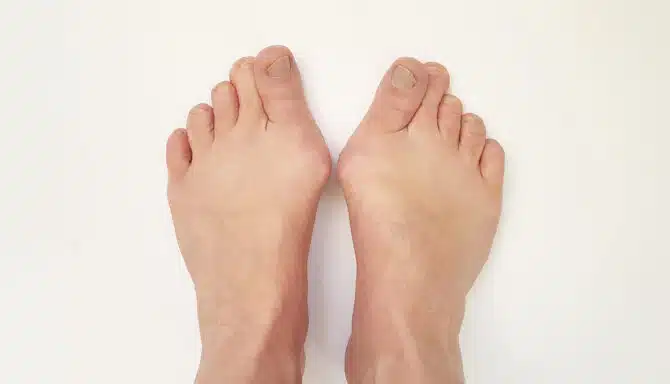
Dealing with bunions can be a pain—literally. For those managing bunions, finding effective solutions can greatly improve quality of life. Let's dive into various bunion treatment options and explore lifestyle tips that can help alleviate discomfort and prevent further issues. Bunion Treatment Options: Finding What Works for You When it comes to managing bunions, there's no one-size-fits-all approach. Remember, they are bony protrusions and can vary in pain level and size. While they can occur in both men and women, they are most common in women. Non-surgical bunion treatment is often the first line of defense. Non-Surgical Bunion Treatment Ill-fitting and unsupportive footwear - particularly narrow shoes and high heels - is one of the most common causes of bunions. A chiropodist can suggest footwear for bunions that provide ample toe space and cushioning. They'll help you discover fashionable footwear for sensitive feet from your local Toronto foot clinic. Additionally, they can do a biomechanical assessment to determine if custom orthotics can help manage the bunion's progression and reduce your pain. A chiropodist can also recommend bunion cushioning techniques and products, such as: Silicone toe separators Bunion aligners Rigid, yet walkable, bunion splints These non-invasive measures can help reduce pressure on the affected area and offer bunion pain relief. Lifestyle Tips For Bunion Relief and Preventing Bunion Progression As with any foot condition, lifestyle changes go a long way! Implement simple bunion exercises into your routine to strengthen the muscles around the joint. To give it your best shot, refer to these 5 simple exercises for bunions! It is also strongly recommended that you avoid high heels. If you have a special event, visit your local foot clinic to talk about comfortable heel and wedges you may be able to wear, for a limited amount of time. In addition, avoid activities that put excessive pressure on your feet, such as long periods of standing on hard surfaces. You can try beginner-level, low-impact yoga to keep moving, but make sure it isn't too intense for your feet. Surgical Solutions In severe situations, bunion surgery from a podiatrist or orthopaedic surgeon can offer significant relief. Surgery realigns the toe joint, providing a long-term solution and eliminating the need to accommodate the bunion at all times. However, it's crucial to consult with a healthcare professional to determine if surgery is the right step for you. Most of the time, surgery is only an option for severe bunions as it can be a lengthy and inconvenient process for you. In addition, there's no guarantee the bunion will not return: some studies indicate a reoccurence rate of up to 25% after bunion surgery. It's important to note that bunion surgery alone isn't going to permanently get rid of your bunions: you still need to do non-surgical bunion treatment options after surgery to prevent reoccurence, namely: Wear proper fitting footwear and avoid high heels Strengthen and condition the muscles in your feet and ankles Address any underlying biomechanical issues to reduce pressure and strain on the affected joint.